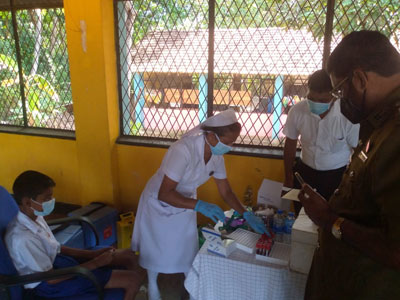News
First-ever dengue ‘census’ in SL yields valuable data
View(s):- Infection trend-changes send flood of patients to hospitals
By Kumudini Hettiarachchi
The need of the hour is a multi-pronged strategy to wage war against the tiny mosquito with black-and-white striped legs which is the harbinger of the dengue infection.
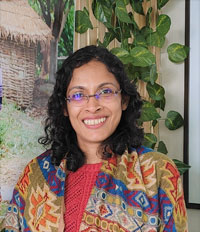
Prof. Neelika Malavige
“Simultaneous action is needed to control the vector-mosquito by destroying its breeding spots as well as decimating its adults, while concentrating on drug development to treat dengue and developing a vaccine,” stresses Prof. Neelika Malavige, the Head of the Dengue Global Programme for ‘Drugs for Neglected Diseases initiative’ (DNDi) and Professor, Department of Immunology and Molecular Medicine, Faculty of Medical Sciences, University of Sri Jayewardenepura.
Before looking at disease pattern changes, she says that with vaccines being developed, the urgent need for countries such as Sri Lanka where dengue is endemic, is good data. This is what she and several colleagues along with strong support from the Health Ministry have been engaged in.
While some traversed the long mile crisscrossing Sri Lanka for this national cause, others have been poring over data in the laboratory – to understand Sri Lanka’s burden of dengue.
The logic was simple – they needed country-wide data collection and these valuable data have been published in a pre-print scientific paper titled ‘The burden of dengue and risk factors of transmission in nine districts in Sri Lanka’ this Thursday. This is the first-ever country-wide dengue study here. (See box for highlights)
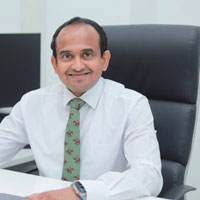
Prof. Chandima Jeewandara
Getting back to the ground reality, Prof. Malavige says that the dengue infection pattern is changing, even though it is that time of year when it should have subsided a little before re-emergence in May. There has been a deviation from dengue’s usual trend this year. This is not unique to Sri Lanka but is also happening in other tropical countries in Southeast Asia and Latin America.
Riveting her attention on vaccines, she says that the second dengue vaccine which has been developed by Takeda looks “promising” with a more robust immune response, even though there is less immunity against DEN-3. The shortcomings of the first Sanofi vaccine, meanwhile, were waning immunity with the passage of time and very low immunity against DEN-2. A major drawback of the Sanofi vaccine was also that when it was administered in the Philippines, it was found that those who had never had a dengue infection showed a tendency not only to get dengue but also to get severe disease.
The vectors which cause dengue are Aedes aegypti to a larger extent and Aedes albopictus to a smaller extent. These infections are caused by four closely related viruses – DEN-1, DEN-2, DEN-3 and DEN-4 which are dubbed ‘serotypes’.
Moving onto vector control, Prof. Malavige says that many countries including Sri Lanka have been grappling with this issue with limited success. No new insecticides have been developed, with only Wolbachia possibly being the light at the end of the tunnel. This is why drugs and vaccines are vital to combat dengue.
(Wolbachia is a ‘harmless’ bug being used to battle the ‘harmful’ bug which is the dengue virus, in a technique that Australia has offered Sri Lanka. The bacterium Wolbachia, a naturally-occurring bug, is used to stop the virus from growing within the mosquito’s body.)
The reality continues to be tragic – dengue considered a climate-sensitive neglected tropical disease, is one of the top 10 ‘threats’ to global public health.
Prof. Malavige explains how a global partnership – the Dengue Alliance was launched last year (2022) to develop affordable and accessible treatment for dengue.
Those who have joined hands across the world are: the prestigious DNDi headquartered in Switzerland (with its 20th anniversary resolve being ‘Best Science for the Most Neglected’); Thailand’s Faculty of Medicine Siriraj Hospital, Mahidol University; Malaysia’s Ministry of Health; Brazil’s Oswaldo Cruz Foundation (Fiocruz) & Universidade Federal de Minas Gerais (UFMG); and India’s Translational Health Science and Technology Institute (THSTI).
Next, Prof. Malavige gives the sufferings and the science of dengue in Sri Lanka in the last two decades. The “usual” trend of this mosquito-borne viral disease, is for infection numbers to drop by end-January, with the next peak occurring in May with the coming of the rains.
“This year has been different and it is not looking good. The numbers have started going up, giving a headache not only to the National Dengue Control Unit but also to doctors at hospitals such as the National Institute of Infectious Diseases (NIID), Angoda,” she says, pointing out that there was a similar situation in 2017 with DEN-2.
The recent history of dengue in Sri Lanka, according to Prof. Malavige has been:
Till 2009 – the infections were caused by the co-circulation of Serotypes DEN-2 and DEN-3
2009 – a major surge in infections occurred with the emergence of DEN-1
Till mid-2016 – DEN-1 persisted
Mid-2016 – DEN-2 emerged
2017 – DEN-2 was the culprit for the worst-ever dengue outbreak, causing severe disease to many
End-2019 – DEN-3 reared its threat
2020 & 2021 – with the COVID-19 pandemic, not only in Sri Lanka but all over the world, brakes seemed to have been applied on dengue
Since 2022 & up to now – the spread has come back to normal, with DEN-3 taking a vice-like grip
To the query, what does this dance of dengue serotypes means to Sri Lanka, Prof. Malavige says that people have not been exposed to DEN-3 for some time. The behaviour of dengue is that if a person gets infected with one serotype, that person becomes immune to another infection from the same serotype thereafter. However, that person cannot escape infection from the other three serotypes and when one of them hits him/her, it has the potential to cause severe disease.
“This is why 2017 with an epidemic of DEN-2 became a nightmare for doctors as people with severe disease flooded hospitals,” she says, adding that the same fears are surfacing now about DEN-3. But it is difficult to predict the course of events as many factors can come into play……only time will tell.
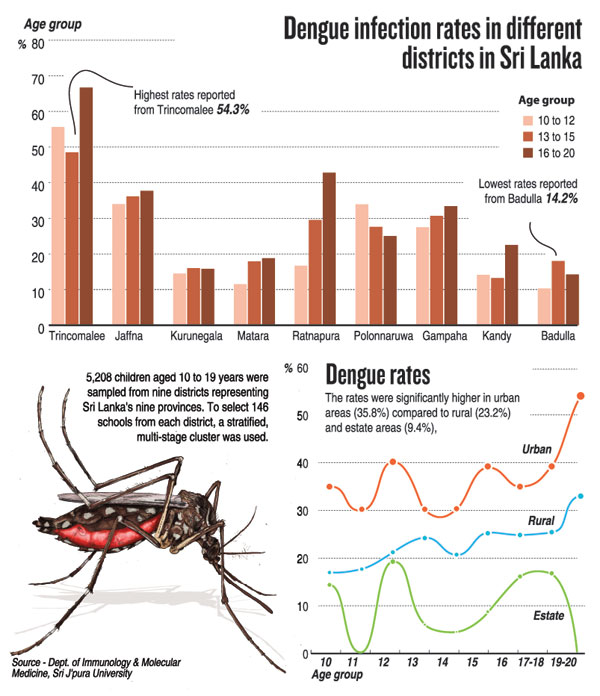
| ‘Understanding Sri Lanka’s burden of dengue’ They fanned out across Sri Lanka to numerous schools to collect blood samples, all to get an insight into how dengue has affected the country. “This was to understand Sri Lanka’s burden of dengue, as infections vary from town to town, district to district and province to province,” says Prof. Neelika Malavige, explaining that the study assessed the dengue seroprevalence rates in 5,208 children, aged 10 to 19 years, in nine districts representing the nine provinces.
The children were from 146 selected schools representing each district. As different districts have different sectors such as urban, rural and estate, the sampling technique had been applied to reflect that too. Now the data are at hand and here are the highlights: The overall seroprevalence rates among children were 24.8% (The seroprevalence rate is the percentage of the individuals being infected in the population, as measured in blood serum) The rates in many districts were <25%These rates were “very different” to those reported from Colombo.As such, it would be important to take into account these differences when rolling out dengue vaccines in Sri LankaTrincomalee (54.3%) reported the highest and the high-altitude estate area of Badulla (14.2%) the lowest rates.While the rates were significantly higher in urban areas (35.8%) compared to rural (23.2%) and estate areas (9.4%), there was no association with rates and population density in each district. Funding for this major seven-month study conducted from September 2022 to March 31, 2023, had been from the World Health Organization (WHO), Sri Lanka. Sri Jayewardenepura University’s Prof. Chandima Jeewandara, Head and Professor in Immunology, Allergy and Molecular Medicine, and Maneshka Karunananda of the Department of Immunology and Molecular Medicine had spearheaded the field work. Health personnel in the offices of the Provincial and Regional Directors of Health, Consultant Community Physicians (CCPs) and Epidemiologists had extended their unstinting support. Some who had gone beyond the call of duty included Dr. Suranga Fernando (CCP, Central Province); Dr. S. Arulkumaran (Provincial Epidemiologist, Eastern Province); Dr. N.Y. Samaraweera (CCP, Matara District); Dr. Subramaniyam Sivaganesh (Consultant Regional Epidemiologist, Jaffna District); Dr. P. Geethika Amarasinghe (Provincial Epidemiologist, North Western Province); Dr. Chintha Jayasinghe (CCP, Gampaha); Dr. Manonath Bandara Marasinghe (Provincial Epidemiologist, Uva Province); Dr. Sarathchandra Kumarawansha (Consultant Medical Administrator, Polonnaruwa); and Dr. Udari Mambulage (Consultant Regional Epidemiologist, Ratnapura District) 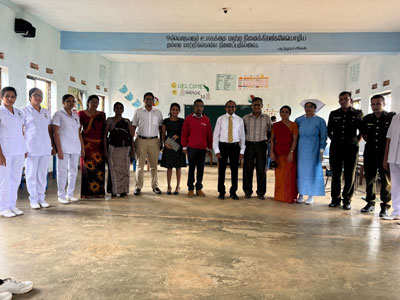 The team which fanned out across the country for this nationally important study | |
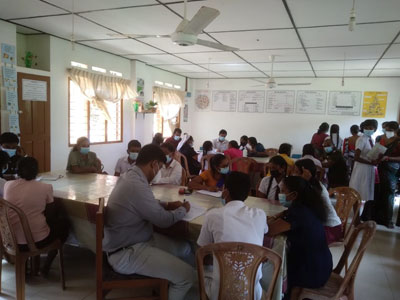 Health staff talking to students before taking blood samples |
The best way to say that you found the home of your dreams is by finding it on Hitad.lk. We have listings for apartments for sale or rent in Sri Lanka, no matter what locale you're looking for! Whether you live in Colombo, Galle, Kandy, Matara, Jaffna and more - we've got them all!


